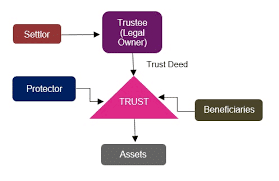Home budgeting is an essential method of controlling one’s own or one’s family’s finances to achieve financial stability and reach one’s goals. Individuals can track their spending and make wise financial decisions by developing a precise plan for their income, expenses, and savings. People may take charge of their finances, lower their debt, and improve their savings by creating realistic budgets and keeping track of their spending. Many software programs, apps, and tools for budgeting can make the process easier and reveal spending patterns. Home budgeting is a vital skill that enables people to secure their financial future and achieve financial freedom. Continue reading to learn more about home budgeting software, home budgeting programs, and home budgeting templates.
What is Home Budgeting?
A household’s income and expenses are taken into account in a home budget. It aids in budgeting for specific costs, saving for financial objectives, and locating places where expenditure can be cut back.
Your combined take-home pay (or disposable income), for instance, would be accounted for in your household budget if you live with your spouse and both of you have jobs. From there, you might set aside money for both your own and shared costs before calculating how much money is left over. Your discretionary income is any extra money.
Software for home budgeting
The notion of budgeting and proactive money management is not appealing to everyone. However, setting up a budget and following it are essential initial steps toward achieving financial objectives of all sizes.
To manage spending and keep an eye on your money, you need to have the correct home budgeting software. Fortunately, you don’t have to spend a fortune on it. Numerous options are free, but you shouldn’t just download the first one you come across.
For home budgeting, there are several software solutions available, ranging from straightforward to complex.
The software for home budgeting that is currently on the market includes the following as just a few examples. You might find one of these options acceptable for properly managing your household budget, depending on your tastes and financial requirements. Before choosing, don’t forget to look through their features and security precautions.
#1. Mint
Intuit created the free online budgeting application Mint. To automatically track your income and expenses, you can link your bank accounts, credit cards, and other financial institutions. Additionally, Mint offers bill reminders, financial goal setting, and budgeting tools.
#2. You Need A Budget (YNAB)
The well-known budgeting program YNAB uses the zero-based budgeting methodology. It gives consumers real-time updates on spending and savings while assisting them in allocating every dollar to a certain budget area. YNAB provides mobile apps for convenient tracking while on the road.
#3. Personal Capital
Personal Capital is a thorough financial management program that includes retirement planning, investment tracking, and budgeting functions. It enables you to integrate all of your financial accounts and provide details about the state of your total finances.
#4. EveryDollar
Ramsey Solutions created the budgeting app EveryDollar. It allows you to manually manage your income and expenses and adheres to a zero-based budgeting methodology. Both a free and a paid version are available.
#5. PocketGuard
The basic budgeting program PocketGuard keeps tabs on your earnings, outgoing costs, and financial objectives. Your transactions are categorized, and it offers information about your spending habits.
#6. Goodbudget
With the aid of the program Goodbudget, you can divide your income among multiple virtual envelopes for various expenditure categories. Based on the conventional envelope system, it has been digitalized for contemporary applications.
#7. Tiller Money
Tiller Money is a budgeting application that lets you generate unique budgeting templates and reports by automatically importing your financial transactions into spreadsheets (such as Google Sheets or Excel).
#8. Quicken
Quicken is a program for managing personal finances that includes capabilities for tracking expenses, creating budgets, and managing investments. Both Windows and Mac users can access it.
#9. Honeydue
With the help of the budgeting app Honeydue, couples can jointly manage their finances. Both couples can examine pooled budgets and spending by connecting their accounts.
Home budgeting program
A home budgeting program is a piece of software made to assist people or families in managing their finances by keeping track of their earnings, outgoings, savings, and financial objectives.
Consider elements like ease of use, device compatibility, security features, and other functionalities that meet your unique financial demands before selecting a home budgeting program. Others have membership options with more robust tools and support, while some apps provide free versions with constrained features. Spend some time investigating various possibilities to determine which one best suits your interests and enables you to keep control of your income.
Here are some popular home budgeting programs:
#1. Quicken
One of the first and most well-known personal finance programs is Quicken. For diverse needs, such as budgeting, cost tracking, investment management, and bill paying, it offers a variety of variants.
#2. You Need A Budget (YNAB)
YNAB urges users to give each dollar a defined purpose by using the zero-based budgeting method. Users may maintain control over their finances because of the real-time updates it delivers on spending and savings.
#3. Mint
Intuit created the free online budgeting application Mint. By connecting to your bank accounts, it automatically keeps track of and groups your transactions while assisting you in creating a budget.
#4. EveryDollar
The EveryDollar software from Ramsey Solutions uses zero-based budgeting. It gives consumers a clear picture of how each dollar is allocated and lets them manually manage income and expenses.
#5. Personal Capital
Along with investment tracking, retirement planning, and wealth management tools, Personal Capital also provides budgeting options. It aids consumers in obtaining a complete picture of their financial status.
#6. PocketGuard
An easy-to-use tool called PocketGuard links to your bank accounts, tracks expenses, and offers insights into your spending patterns. Additionally, it sets aside money for savings and bills.
Tips for effective home budgeting
Set attainable objectives: It’s critical to have both short- and long-term objectives that are in line with your spending plan. Establish your goals and monitor your progress toward achieving them, whether they be for retirement, debt repayment, or vacation savings.
#1. Make saving a no-brainer.
Try to routinely set aside a percentage of your income for emergency money, retirement accounts, or other savings accounts, even if you’re not saving 20% of your income each month. Setting up automated savings transfers is one way to keep you motivated to save.
#2. Pay attention to impulsive purchases.
Impulsive purchases, or those done on a whim or to deal with emotions, might throw your spending plan off track and cause regret after the novelty of the purchase wears off. Consider giving yourself a “cooling-off” period before making minor purchases so you can decide if you want to make the purchase.
#3. Look for inexpensive methods to cut costs.
To determine where you might be overspending, look at your utilities, insurance subscriptions, and discretionary spending. Consider negotiating lower prices, changing service providers, or reducing your household’s energy consumption.
#4. Include the entire family.
Include family members or housemates in the budgeting process if you share finances with them. You can work together to achieve your financial objectives, finding ways to split costs and motivating one another to save more.
At Home Budgeting
Home budgeting is essential to know where your money is going, whether you’re juggling life with your partner, sharing expenses with roommates, or concentrating on your own financial goals.
Here are four easy steps for making and maintaining a home budget.
#1. Select a method for distributing your funds.
Organizing how your money is spent is the goal of creating a budget. Consider how you’d like to divide your income in the perfect world so that you can pay your bills, start saving money, and still have enough left over for other uses.
There are several approaches to establishing a budget that meets your specific requirements. You can start by using some of the more popular budgeting techniques, such as:
#2. 50/30/20 guideline of budgeting
Using this strategy, you would divide your household income into three categories: needs (50 percent), wants (30 percent), and savings (20 percent). Although this technique has a simple framework to follow, people with low or high earnings or those who reside in locations with expensive housing may find it ineffective.
- Zero-based budget: The objective of this strategy is to allocate every dollar in your household’s income such that, at the end of the month, your income less your outgoings equals $0. So, if you have $100 left over, you have to decide what to do with it, maybe pay off some debt.
- Envelope budget: You can construct a standard budget using this technique. Once you’ve determined what you need to spend money on, take out cash and place it in a different envelope for each expense. Since most expenses aren’t paid in cash, one alternative to the envelope system is to just keep an electronic running total of what goes into each envelope or to utilize a program with fictitious budget categories, like Goodbudget.
#3. Keep tabs on your household spending
To account for all of your living expenses, gather information from every member of your household. To automatically track and categorize costs, you can use personal finance applications and online banking tools.
Give yourself room in your home budget for one-of-a-kind, non-recurring events that you haven’t budgeted for, in addition to keeping track of your costs. Things like expensive auto repairs, home improvements, and child tutoring services might need to move up on your list of financial priorities. Consider having a family budget discussion over dinner with your family.
#4. Record everything.
You can see your spending and savings if you record your home budget in a spreadsheet or budgeting tool. Search online for a template that can be customized to meet your budgetary requirements. If you wish to create your own, you can do so with Google Sheets, an Excel file, or even by writing it down in a notebook.
Home budgeting template
You’re looking for a home budgeting template to help you take charge of your money.
You’ve come to the correct place!
If you like automation, you can use the Mint app to create the same budget and have it manage your finances over time.
It’s simple to switch over if and when you’re ready to automate your budget because the categories used in the budgeting templates mirror those found in the Mint app.
We’ll examine three fundamental budgeting techniques in this post:
A Simple Budget Template: Without going into depth, learn how to utilize this template, which uses the same categories as the Mint program.
Learn how to utilize this detailed budget template, which includes the same categories as the Mint app, as well as all the information.
Budgeting Using a Simple Budget Template
You can use our straightforward budget template to track your monthly income and outgoing expenses by categorizing your expenses and income. You will discover the following in the template.
- The “Income Input” tab
- “Expense Input” tab
- The “Budget Summary” tab
To begin, click the “Download” button to save our straightforward monthly budget template to your computer. Then, open the file in Microsoft Excel or Google Sheets. Here is the next step.
#Step 1
At the bottom of the spreadsheet, select the “Income Input” tab to get started. The complete list of income categories can be found here. This comprises a variety of revenue sources like your normal salary, investment income, bonuses, and more.
Both the “ESTIMATED” and “ACTUAL” columns must be completed. By completing these columns, the “DIFFERENCE” column will automatically be filled up and your total income will be displayed.
#Step 2
The “Expense Input” tab may be found towards the bottom of the sheet. Click on it next. Clicking this button, which is immediately adjacent to the “Income Input” page, should display a list of spending categories, including bills, travel, entertainment, child-rearing costs, and more.
#Step 3
Fill out the “Estimated” and “Actual” sections after going through each category. Once more, the “DIFFERENCE” column will be filled in automatically.
#Step 4
Once all of your expenses have been entered, select the “Budget Summary” tab located just to the right of the “Expense Input” tab.
#Step 5
Based on the revenue and expenses you entered on the budget worksheet, your “Budget Summary” will automatically produce results. You may view your spending by category, your income compared to your costs, and additional information here.
Benefits
This straightforward budget template was created for people who are new to budgeting and are unsure of where to begin.
Time-saving: Since the framework has already been established, it can be a useful time-saving technique.
Maintaining your budget is simple: When you use a well-structured worksheet like this one, it is easier to keep track of your budget.
Understanding your finances: Although this template is straightforward, it can help you acquire a broad understanding of your spending and potential areas for reduction.
Drawbacks
Contrary to the Mint software, you must manually enter every single number each month.
Minimal detail: Compared to other templates or budget tracking systems, this template is less detailed.
Less useful insights: You can see the fundamentals of your spending patterns with the template. But unlike the app, it doesn’t offer you recommendations or useful information.
Budgeting Using a Detailed Budget Template
You can keep a closer eye on your spending with the help of our comprehensive budget template. The detailed budget template uses the same procedures as the simple budget template but requires a lot more information.
Start by selecting “Download” and then opening the budget template in Google Sheets or Microsoft Excel.
#Step 1
Start by selecting the “Income Inputs” tab, which is located in the spreadsheet’s bottom left corner. With your salary, bonuses, and other sources of income, fill out the “ESTIMATED” and “ACTUAL” fields.
#Step 2
After entering all of your income sources, select the “Expense Inputs” option on the spreadsheet’s bottom. To the right of the “Income Inputs” tab, ideally.
#Step 3
The “Estimated” and “Actual” columns should now be filled out with your spending. You’ll see that there is a significant increase in the level of detail in the expense category breakdowns, enabling you to be quite detailed about your spending.
The “DIFFERENCE” column will be automatically determined.
#Step 4
The “Budget Summary” tab, which is situated to the right of the “Expense Inputs” panel, can be selected once you have entered your income and expenses.
#Step 5
Your revenue and cost entries will immediately populate the “Budget Summary” page, so you can get a complete representation of your budget. This covers distinct categories of spending and revenue, graphs and charts, and more.
What are examples of home budgeting?
A mortgage or rent, health insurance, a car payment, or property taxes are a few examples. All of these might be included in the category “fixed expenses”. Variable costs are unavoidable, but they might change from month to month. These costs include those for groceries, auto repairs, electricity, and water use.
What are the seven types of budgeting?
The strategic plan budget, cash budget, master budget, labor budget, capital budget, finance budget, and operating budget are the seven various types of budgeting that businesses utilize.
What are the 4 Cs of budgeting?
The four main parts of a budget are as follows:
- Set financial objectives.
- Establish Your Budget.
- Maintain a spending log.
- Make modifications.
Summary
An essential tool for organizing your finances and enhancing your financial security is creating and using a home budget. You can make sure that bills are paid on time, lessen stress, and work toward reaching financial goals by following the above-described methods. Keep in mind that budgeting is a continuous process that necessitates frequent review and modification.
- BEST BUDGETING APP: The Top 11 Picks in 2023 (Updated)
- E-commerce Business: Ideas, Models, & 2023 How to Start Guide
- GAP ANALYSIS: The Fundamental Components of a Gap Analysis
- PERSONAL BUDGETING: Detailed Guide
- WEALTH MANAGEMENT TOOLS: Definition, and Best Wealth Management Tools






